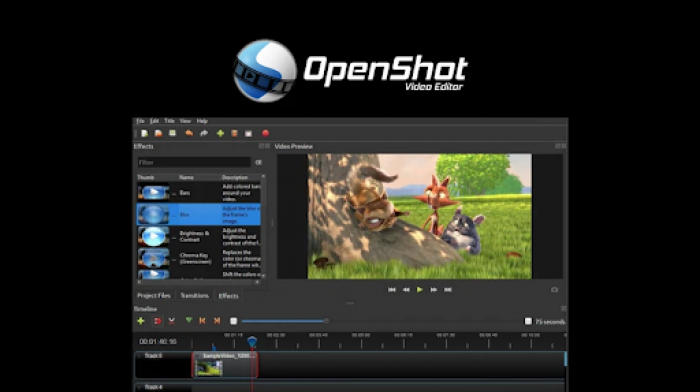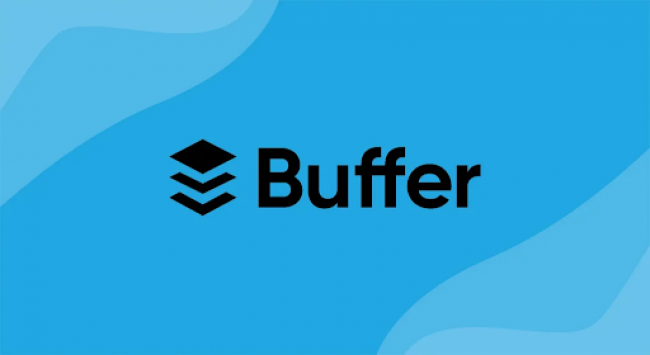OpenShot Video Editor functions as an open-source free software which provides video editing tools for use across multiple operating systems. OpenShot Video Editor enables use on Windows platforms together with macOS platforms, Linux platforms as well as ChromeOS. The software interface of OpenShot Video Editor functions in more than 30 spoken languages which lets users from many regions utilize its features. The GPL (GNU General Public License) tool license grants public access to view its code through the GitHub platform.
Development and Background
The video editor OpenShot appeared on the market in 2008 through the work of developer Jonathan Thomas. The application started serving Linux users before its development extended to different platforms. The software operates through Python code but depends on FFmpeg and C++ processing for video functions. The GitHub platform hosts the source code while development continues actively with tracking for issues and receiving community code contributions.
Core Features
OpenShot provides a collection of standard video editing functionalities, including:
- Timeline-Based Editing: Users can drag and drop media files onto a timeline for non-linear editing.
- Unlimited Tracks: The software supports multiple layers for video, audio, images, and titles.
- Video Effects: Includes built-in effects for brightness, chroma key, grayscale, blur, and more.
- Transitions: Over 400 transition effects are included, which can be applied between clips.
- Keyframe Animation: Elements can be animated using keyframes for opacity, position, rotation, and scale.
- 3D Titles: Through integration with Blender, users can generate animated 3D titles.
- Slow Motion and Time Control: Provides speed adjustments, including reverse playback, fast-forward, and slow motion.
- Audio Waveforms: Users can visualize audio as waveform overlays on the timeline.
- Title Editor: Offers text title templates with the option to customize.
OpenShot Products Overview
OpenShot offers three main products:
- OpenShot Video Editor: A cross-platform desktop application designed for non-linear video editing. It includes a drag-and-drop interface, timeline, keyframes, transitions, and export options for multiple formats.
- OpenShot Cloud API: A server-side API that enables programmatic video editing. It supports the automation of tasks like trimming, watermarking, and rendering videos. This API is suitable for cloud-based applications or back-end video processing systems.
- OpenShot C++ Library: The core engine behind OpenShot, written in C++. It is modular and can be used independently or integrated into custom applications requiring video manipulation functions.
Each product targets different use cases—desktop editing, cloud automation, and software development—while sharing a common foundation in open-source video processing.
Supported Formats
OpenShot uses FFmpeg to support a wide range of audio, video, and image formats, including:
- Video: MP4, MOV, AVI, FLV, MKV, WebM
- Audio: MP3, WAV, OGG, AAC
- Image: PNG, JPEG, BMP, SVG
These formats are compatible with most major devices and platforms.
Installation and Availability
OpenShot can be downloaded directly from its official website. Installation packages are available for:
- Windows (EXE)
- macOS (DMG)
- Linux via AppImage or Flathub (Flatpak)
- ChromeOS (via Linux support)
No paid version or commercial licensing tier is available.
Language Accessibility
OpenShot’s user interface supports over 30 languages, including Hindi, Arabic, Korean, Turkish, Russian, Vietnamese, and more. This localization is managed through the LaunchPad platform, where contributors can submit translations.

Use Cases
Users across different sectors have applied OpenShot in areas such as:
- Educational content development
- Internal communication videos
- Personal or hobbyist video editing
- Social media content creation
- Event-based video compilations
Usage varies based on system configuration, user familiarity, and project requirements.
Limitations and Considerations
Several areas have been noted by users and developers:
- Performance: Projects with many high-resolution files may experience lag or longer export times on lower-spec systems.
- No Built-in Asset Library: The software does not include stock video, music, or sound effects.
- Learning Curve: Although it provides a basic interface, first-time users may need to refer to documentation or tutorials.
These aspects are documented in the user forums and GitHub discussions.
Comparisons
- Shotcut: Offers similar open-source functionality with more granular export options.
- Filmora (Paid): It has a larger built-in asset library and built-in AI tools.
- Adobe Premiere Elements: A commercial product with deeper timeline controls and plugin support.
Such comparisons vary depending on the user’s editing goals and preferred workflows.
Awards and Recognition
OpenShot has received recognition on platforms like SourceForge, FossHub, and Alternative for being a community-driven and open-source video editing tool. It has also been included in numerous software recommendation lists by independent tech review sites.
Licensing and Distribution
OpenShot is released under the GPL v3 license. This means users can:
- Use the software for any purpose
- Access and modify the source code
- Distribute original or modified versions
Redistribution must follow the same licensing terms.
Contribution and Support
While OpenShot does not have formal customer support, users can access:
- Community forums
- GitHub issue tracker
- Online documentation and guides
- External tutorials and walkthroughs
Financial or infrastructure support is provided by various sponsors listed on the OpenShot website. Development and feature updates are community-funded or grant-supported.
Summary
OpenShot Video Editor is a cross-platform, open-source application that provides a wide range of video editing capabilities. It is actively developed, publicly available, and supported by a global community. The tool includes timeline editing, keyframe animations, effects, and 3D title support. Installation packages and source codes are freely accessible. Its usage, strengths, and limitations may vary based on user needs, project scope, and technical setup.
Post Comment
Be the first to post comment!
Related Articles

Dezgo: Guide on How to Use and its Pricing in 2025
Apr 21, 2025
11+ Best Free AI Tools to Use in 2025
Apr 16, 2025

